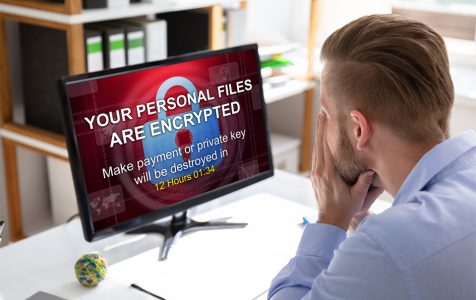The internet has become very unsafe. One of the latest lethal security threats in the internet is the Xorist ransomware. Security analysts have noticed a marked increase in the Xorist ransomware infections.
We’ve compiled this article to explain what the Xorist ransomware is, what it does to you, its method of intrusion, and how to remove it. Follow the ransomware removal guide that we have provided at the end of the article as well to get rid of the Xorist ransomware.
About the Xorist Ransomware
The Xorist ransomware belongs to a family of malware Trojans (all are ransomware) that are offered as RaaS (Ransomware as a Service). Hackers create different Xorist ransomware variants using a ransomware builder. This makes it easy for script kiddies and con artists to create custom versions quickly.
Because it is easy to customize Xorist ransomware variants, PC security becomes more complicated. Researcher find it challenging to offer solutions because it has countless variants. It uses different encrypted ransom messages, file extensions, encryptions, and various other stratagems.
The different variants of Xorist ransomware also keep evolving despite active decryption available. Since its emergence, the Xorist ransomware remains active, and new versions continue to emerge.
What Does the Xorist Ransomware Do?
Xorist is a malware that encrypts files, usually on Microsoft Windows PCs. It uses a robust encryption algorithm. It demands users to pay ransom for the files to be decrypted. It often targets English and Russian speaking users. Xorist is distributed by hacking through an insecure RDP configuration using:
- web injects,
- exploits,
- email spam,
- malicious attachments,
- fake updates,
- fraudulent downloads,
- infected, and
- repackaged installers.
Xorist Ransomware Intrusion Method
Xorist ransomware copies its files to the victim’s PC’s hard disk. Because of the different variants, they have different file names, for example, (randomname).dll. However, Xorist’s default extension is .EnCiPhErEd.
The ransomware then creates a new startup key with the name Xorist ransomware and value (randomname).dll. The victim can then find it in their processes list with name Xorist ransomware or (randomname).dll. It can also further create a folder in the victim’s system, specifically under C:\Program Files\ or C:\ProgramData, with the name Xorist ransomware.
All the variants of Xorist ransomware have a default ransom note named ‘HOW TO DECRYPT FILES.txt’ and it includes a text with the following message:
Attention! All your files are encrypted!
To restore your files and access them,
please send an SMS with the text XXXX to YYYY number.
You have N attempts to enter the code.
When that number has been exceeded,
all the data irreversibly is destroyed.
Be careful when you enter the code!
How to Remove The Xorist Ransomware?
The Xorist ransomware can be removed using two methods:
- Manually, by deleting all its corresponding registry keys and files, removing it from the startup list, and unregistering all its corresponding DLLs.
- Automatically, using third-party anti-malware tools and data recovery software such as Wipersoft, Spyhunter Remediation, Emsisoft, and Kaspersky among others.
Fortunately, PC security analysts and researchers have already found the ransomware builder that hackers have been using to create the Xorist ransomware variants. They have then used this builder to create a decrypter in the form of third-party software for all threats related to all the variants for the Xorist ransomware.
As a result, a reputable anti-malware or antivirus can eliminate the Xorist ransomware successfully. The victim will need to use a professional optimization utility to fix the damage.
Xorist Ransomware Removal Guide
You can remove the Xorist ransomware manually by following the guidelines below:
- Deleting all its associated registry keys and files.
- Removing it from the startup list.
- Unregistering all its corresponding DLLs. Additionally, you should restore missing DLLs, should they be corrupted by the Xorist r
To get rid of the Xorist ransomware manually, you should carry out the following steps:
- Back up all your files and folders in safe storage.
- Boot your PC into Safe Mode.
- Clean all the registries created by the Xorist ransomware on your PC. The usually targeted Windows registries are:
HKEY_LOCAL_MACHINE\Software\Microsoft\Windows\CurrentVersion\Run
HKEY_CURRENT_USER\Software\Microsoft\Windows\CurrentVersion\Run
HKEY_LOCAL_MACHINE\Software\Microsoft\Windows\CurrentVersion\RunOnce
HKEY_CURRENT_USER\Software\Microsoft\Windows\CurrentVersion\RunOnce- Open the Run Window, type “regedit” and click OK.
- In the registry editor, freely navigate to the Run and RunOnce keys, which locations are shown above.
- Remove the value of the malware by right-clicking on it and removing it.
- Locate files created by the Xorist ransomware.
- Run Windows, type explorer.exe, and click OK.
- Click on This PC or My PC or My Computer from the quick access bar.
- Locate the ‘search’ box and type ‘fileextension:’ then type the file extension, for instance, “fileextension:exe.” Then leave a space and type the file name you believe the malware has created.
- Wait for the green loading bar to fill up as an indication that the file has been found or not.
- Delete the infected file or folder.
- Boot back into normal mode.
- If you have an anti-malware tool, run the application to scan your PC for any remaining traces of the malware.
Conclusion
That it!
We understand how frustrating the Xorist ransomware can be. But we believe that now you already understand it and know how to get rid of it. If you have any other issues with ransomware attacks, alert us through the comments section.
